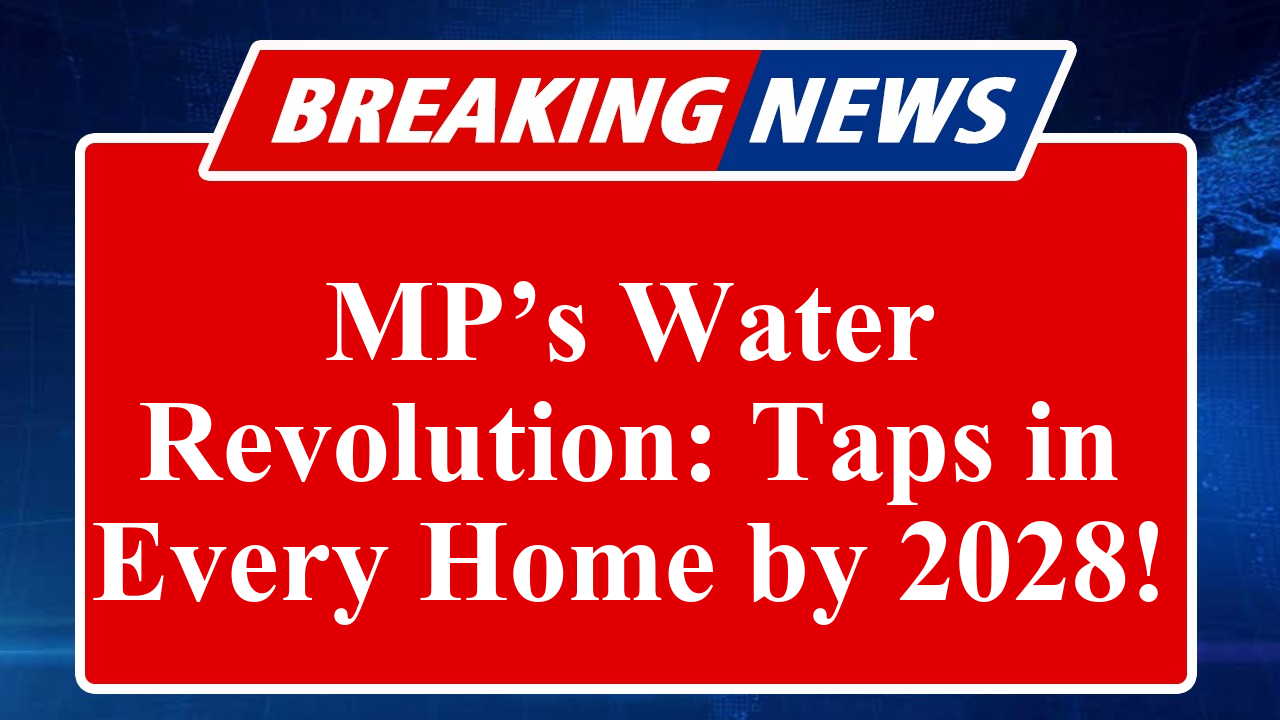As Madhya Pradesh accelerates efforts under Jal Jeevan Mission 2.0, the state aims to provide tap water to every rural household by 2028. With over 80% coverage achieved, challenges like infrastructure quality and water sustainability persist. The extended timeline and enhanced funding signal a renewed push to bridge gaps, improve health, and empower communities through clean water access.
Madhya Pradesh’s Ambitious Push for Universal Tap Water Access
Madhya Pradesh is intensifying its efforts to achieve 100% tap water coverage under the Jal Jeevan Mission (JJM) 2.0, an extension of the central government’s flagship initiative launched in 2019. The mission, initially set to provide functional household tap connections (FHTCs) to all rural households by 2024, has been extended to 2028 to address remaining gaps and ensure sustainable water supply systems. As of February 2025, Madhya Pradesh has provided tap water connections to approximately 80% of its rural households, covering over 1.2 crore homes out of an estimated 1.5 crore, according to the JJM dashboard.
The state’s progress is notable, with districts like Bhopal, Indore, and Gwalior reporting near-complete coverage. However, challenges such as inconsistent water quality, aging infrastructure, and remote villages with limited access to reliable water sources continue to hinder full implementation. The Ministry of Jal Shakti recently approved ₹15,381.72 crore for Madhya Pradesh to bolster water supply schemes, focusing on infrastructure upgrades and source sustainability measures like rainwater harvesting and groundwater recharge.
Jal Jeevan Mission 2.0 emphasizes ‘Jan Bhagidhari’ (community participation), empowering Gram Panchayats and Village Water Sanitation Committees (VWSCs) to manage local water systems. These committees, comprising at least 50% women, prepare village action plans to ensure long-term functionality of tap connections. In Madhya Pradesh, over 40,000 VWSCs have been formed, with 70% actively involved in operation and maintenance, as per state reports. This community-driven approach aims to foster ownership and accountability.
The mission’s extension to 2028 reflects the government’s acknowledgment of logistical and financial challenges. In Budget 2025, Finance Minister Nirmala Sitharaman announced an enhanced outlay for JJM, with Madhya Pradesh set to receive a significant share to address quality issues in contaminated water sources, particularly in tribal areas. The state has also integrated solar energy-based groundwater schemes, with 33,229 such projects expected to save ₹1 trillion in energy costs over their lifecycle.
Health benefits remain a key driver of the mission. The World Health Organization estimates that JJM’s focus on safe drinking water could prevent 4 lakh diarrhoea-related deaths annually across India. In Madhya Pradesh, where waterborne diseases have historically affected rural communities, the provision of 55 litres of potable water per person per day is transforming public health outcomes. Women, who traditionally spent hours fetching water, are also experiencing reduced drudgery, boosting productivity and socio-economic empowerment.
Despite progress, concerns linger about the quality of infrastructure. Reports from districts like Jodhpur indicate that even in villages with tap connections, inconsistent water supply remains an issue. The state government has deployed 100 nodal officer teams to inspect ₹1.5 trillion worth of JJM projects across 135 districts to address these gaps. Additionally, the Enforcement Directorate’s recent actions against contractors involved in alleged financial irregularities underscore the need for transparent implementation.
Madhya Pradesh is also leveraging modern technology, including automated data capture systems, to monitor water quality and supply consistency. The JJM dashboard provides real-time updates, ensuring accountability. As of January 2025, 11 states and Union Territories, including neighboring Gujarat, have achieved 100% coverage, setting a benchmark for Madhya Pradesh to emulate.
The mission’s focus on sustainability includes greywater management and convergence with other schemes like Namami Gange for holistic water resource management. With an estimated 20% of rural households still without tap connections, Madhya Pradesh is prioritizing multi-village schemes to address water scarcity in arid regions like Bundelkhand. The state’s commitment to achieving ‘Har Ghar Jal’ by 2028 hinges on robust execution and community engagement.
Disclaimer: This article is based on recent reports, government data, and publicly available sources, including the Jal Jeevan Mission dashboard, Ministry of Jal Shakti updates, and news from credible outlets like PIB, Business Standard, and The Economic Times. Information is accurate as of July 2025 and subject to change as new data emerges.

